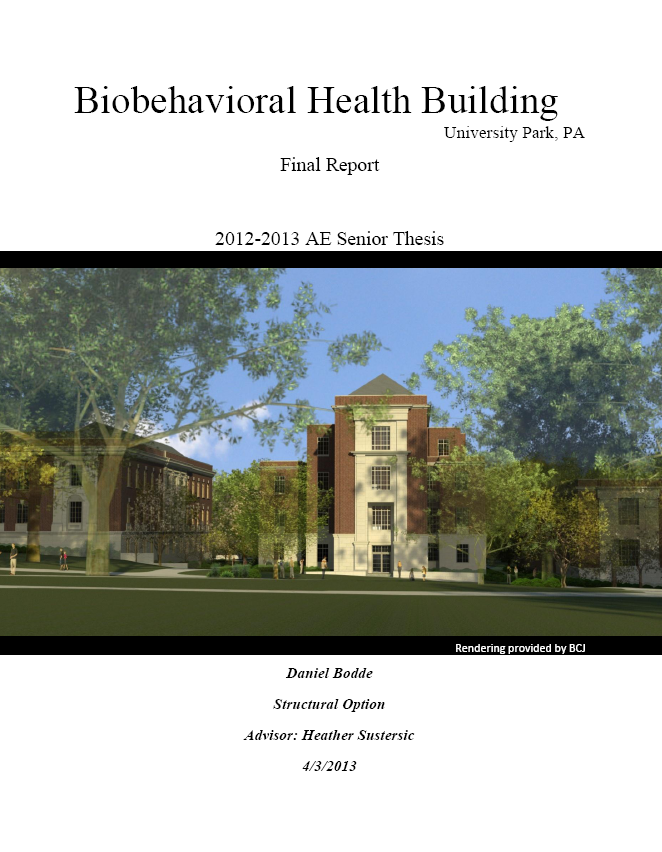|
Summary:
The structure of the BBH Building was redesigned using reinforced concrete. One way slabs with interior beams were successfully designed to hold the gravity load. These beams created a stiff connection between the beam and columns. This allowed the structure to be treated as a concrete moment frame. The columns were successfully designed to resist wind loads. All members of the new concrete structure were determined to be within the allowable serviceability limits.
In order to try and offset the anticipated cost, schedule, and weight increase, thin brick precast panels were used for the façade of the BBH building. These panels were determined to be cheaper and are proven to accelerate the construction of the façade. The typical layout of the panels was determined along with a typical connection. Research was also done to determine the thermal and moisture resistance of the panels.
Finally a schedule was developed to determine what impact the concrete redesign and the new façade had on the schedule. The new schedule was developed by using the daily output of tasks that were provided in RSmeans. From this the new schedule was created and then compared to the existing schedule that was provided by the Construction Manager of the project.

Click on the above thumbnail to open a pdf version of the full Final Report.
To View a copy of the Executive Summary only click here.
|